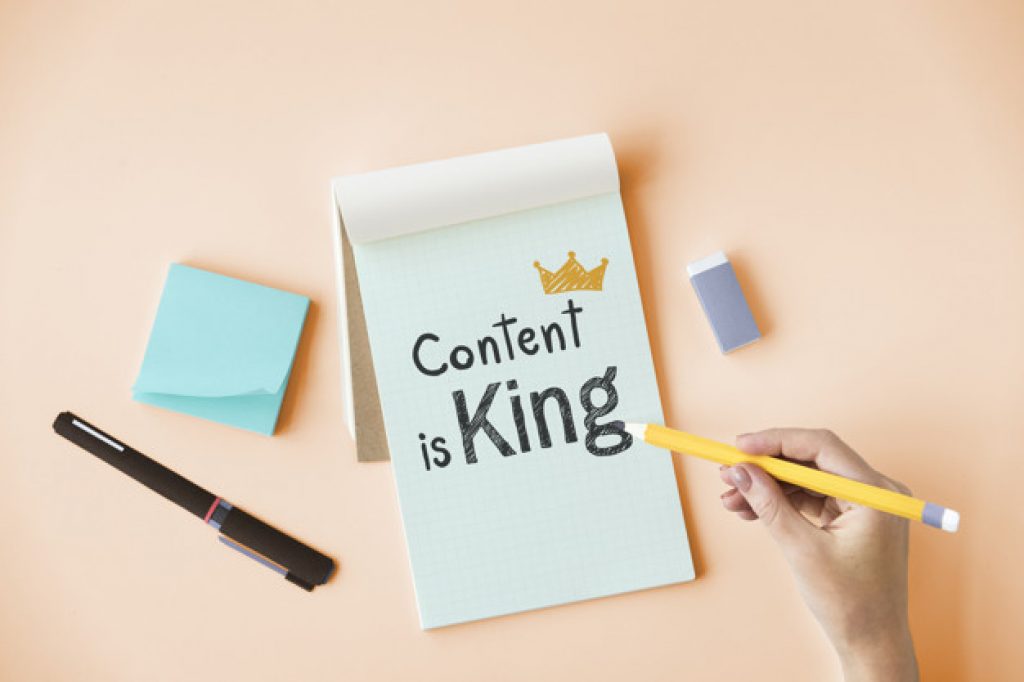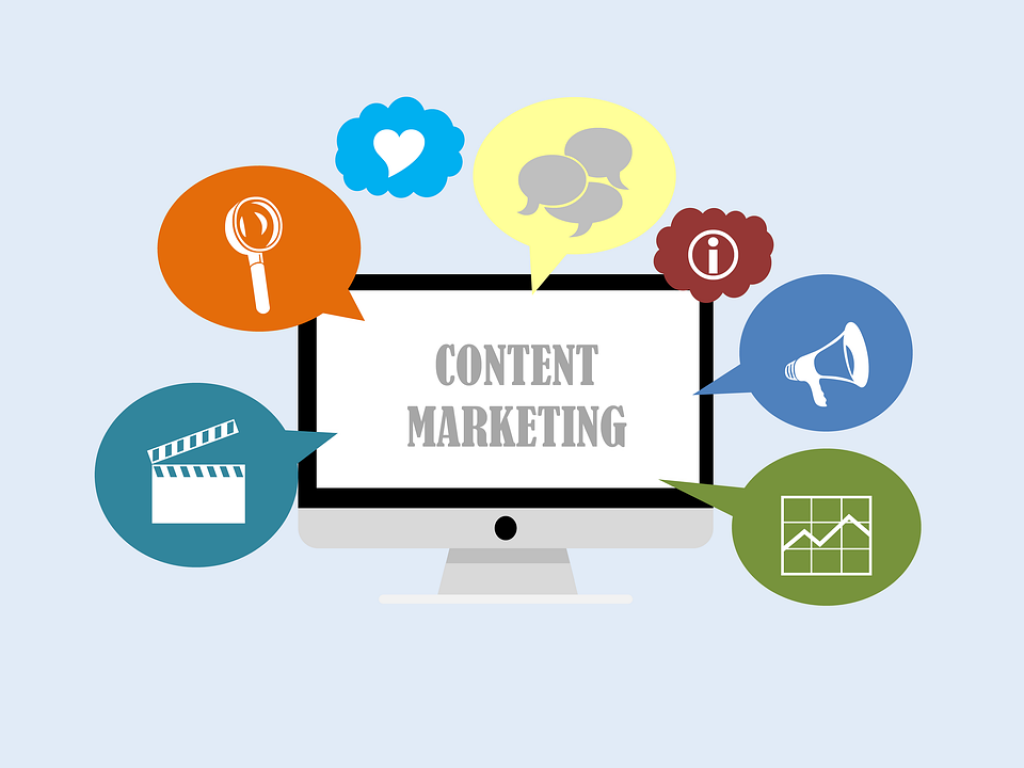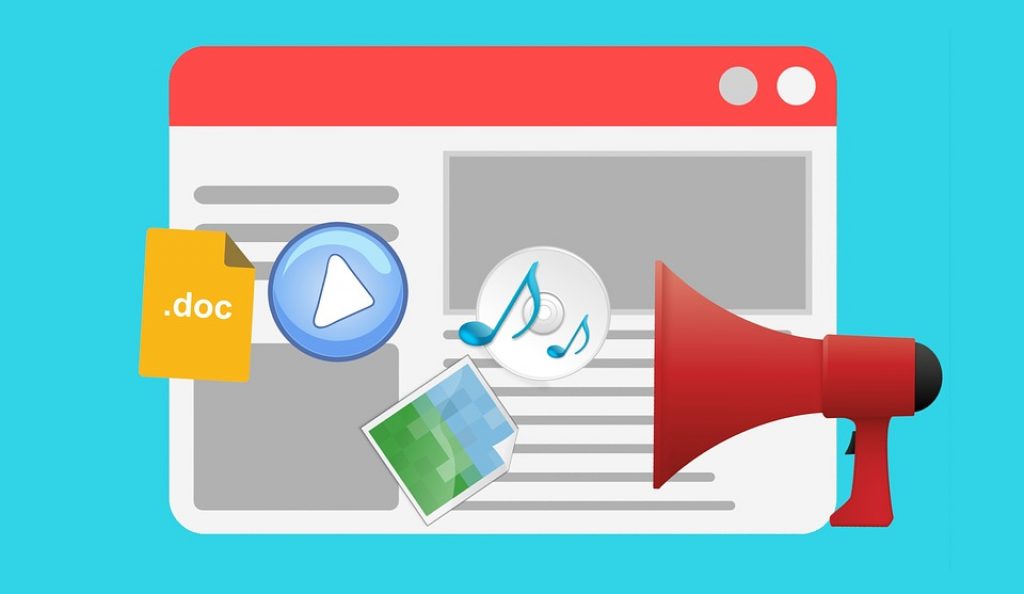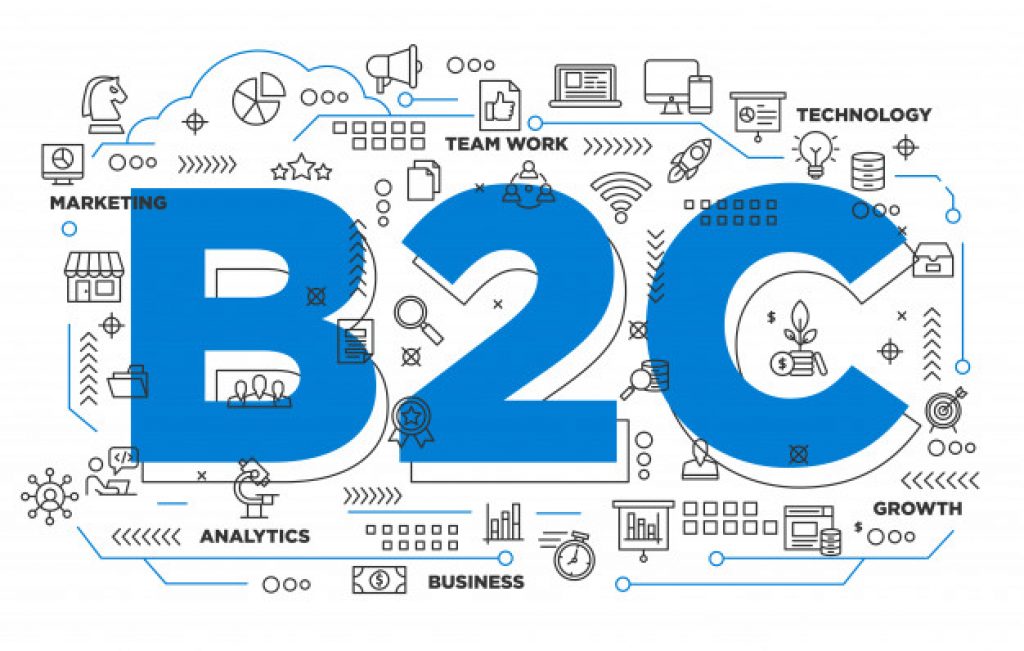What Is Content Marketing?

If you’re an up and coming blogger, or you simply want to learn about the profession and eventually get a foothold in the business, you probably have many questions. Of those, one is no doubt particularly pressing: exactly what is content marketing?
What’s more, even if you’re already a content marketer, it would certainly do you good to learn more about your industry, as this is one of the many areas in marketing that’s constantly evolving and updating. And as new strategies continue to emerge, you need to stay ahead of the game.
With the rules constantly changing, what you need is a content marketing wiki page, and that’s precisely what you’re getting from this article. Here, you’ll learn everything there is to know about content marketing and how to make the most of it.
There are three main things that you must know before we start with this detailed guide on content marketing:
- Content marketing is the future of digital marketing.
- Content is the backbone of every inbound marketing strategy.
- Google will only rank great content well and nothing else.
What Is Content Marketing?
In the most basic of terms, content marketing is all types of marketing that involve online content—both its creation and sharing. It differs from copywriting in the sense that its purpose is to stimulate interest in a product or service but not explicitly promote it.
It involves the use of content for educating and informing readers, entertaining people, and finally, converting visitors into customers.
This would be the simple definition of content marketing, but the main problem with content marketing remains. Although its popularity is on the rise—53% of businesses worldwide use content marketing—many people don’t know how to do it right.
To use content marketing effectively, you need to know why it’s important and how the best marketers harness it in their online strategies. That’s precisely what we’ll be discussing here.

Why Is Content Marketing Essential in Every Marketing Project?
Remember the phrase “content is king”? People used to define content marketing as something that helps you separate yourself from others, but now it’s an essential part of every marketing project and strategy in general. Why is that?
It stems from the fact that the online world is no longer a new one, and most people know how it works. They see what ads are and how they function, and they aren’t going to react to them like people used to before. In other words, people are no longer gullible like they used to be.
If you want to affect people, you need to do it more uniquely—make yourself stand out. However, there’s no need for you to trust these words, trust the content marketing statistics that prove the benefits of content marketing:
- An overwhelming number of people prefer custom content, especially the latest generation, Gen Z. 90% believe custom content is the way brands should engage with consumers.
- Most people want to get to know a company or brand by reading about it in articles instead of through ads, or “at least” 70% of them do.
- Another major feature of content marketing, when compared to ads and promotions, is seen in the fact that it costs around 60% less and yet it generates three times more leads. This is one of the leading benefits of content marketing, perfectly exemplifying how useful it is and why it matters today.
- 77% of people read blogs. That’s a considerable number, and they do it for a variety of reasons. Younger people get their news online, for example. We’re now part of a world where nearly all the information we need we can get online.
- When it comes to small businesses, those with blogs get 126% more leads than those without.
- According to the Content Marketing Institute, conversion rates are six times higher with content marketing than with any other method.
- Content marketing matters in SEO strategies as well, because with blog content, you can end up with 434% more search engine–indexed pages.

The Type of Content Used in Content Marketing
Virtually every kind of content you can imagine can be included in your content marketing strategy—blogs and content-rich web pages are not the only types of content marketing. There’s so much more.
However, here are the ones that consistently work wonders.
-
Blogs
We have to start with blogs because they always have and continue to be the leading and most effective type of content marketing.
There’s a good reason for that. One of the easiest and best ways to improve your SEO and get more organic traffic is through a content marketing blog. What’s more, Google always prefers sites with blogs.
-
Videos
Videos are becoming more and more popular, and it’s now the best way to grab your audience’s attention, especially if they belong to the younger generations. That also means that video will most likely become the leading type of content marketing in the near future.
-
E-books
The main thing to know about e-books is that they are all about the value. An e-book shouldn’t be a simple long ad or a longer blog post—it needs to add value to the reader. An e-book is meant to stand the test of time and provide an abundance of useful information and insight.
-
Podcasts
Podcasts are the latest trend in how to do content marketing. Their popularity is rising with every passing day, and they can be a great type of content marketing for basically anyone. Almost half of the US population has listened to a podcast, which speaks volumes about their usefulness, and they’re one of the few content types that can be consumed on the go.
-
Infographics
Everyone who cares about statistics will like infographics. They are the best way to visualize data and create a quick and easy way for people to understand why something matters and why it works.
-
Case Studies
Case studies are customer stories, and they are thus a great way of emphasizing how excellent your product/service is. They have proven to be the most effective of all types of content marketing when you take into account the difficulty of content creation.
-
White Papers
White papers are in many ways similar to e-books. However, they are mostly aimed at B2B and other small businesses. With that in mind, a white paper needs to have a lot more information than your regular e-book, and it needs to be data-driven and focused on details. Another purpose of white papers is that they can help businesses find information on new leads.
-
Social Media Posts
Posts on social media can be considered a type of content marketing—but there’s much to be explained here, as social media posts can be used in all sorts of ways and all sorts of reasons. Frankly, social media marketing deserves its own detailed guide. Both individuals and business can market themselves through social media posts. It’s also vital for every marketer to know that social media is essential in any digital marketing strategy, just as much as content is.

How to Do Content Marketing the Right Way
Doing content marketing the right way means that what you’re doing is effective and brings you the results you’re expecting. Achieving this is naturally no easy feat.
First of all, you need to have a marketing plan, which should include the following:
- Your objective for the content
- The purpose of each type of content you’re creating
- The value of your content to the readers
Besides that, it’s always good to see some effective examples of what other companies are doing for their content marketing.
Content Marketing Strategies
When it comes to content marketing, we can’t say that we’ve explained it adequately without talking about strategies. Having a plan is one thing, but you also need to be able to execute that plan.
It’s always best to develop your own content marketing strategy, but it’s good to take pointers from other successful strategies already in use.
You need to be aware of the audience for whom you’re creating your content. Knowing the audience will help you find what content best suits them, but that doesn’t mean you shouldn’t experiment. Naturally, experimentation should go in line with analytics, which help you find what kind of content will garner you the most attention.
Knowing the audience isn’t everything—you also need to know the problems they’re having and how to fix them. In the end, that’s the primary purpose of content marketing: if you know what your audiences’ pain points are and your content can help them, you’ve already become a successful content marketer!
If you combine that with emphasizing all the things that make you unique, you’re well on your way to be among the best in the business. After all, it’s crucial to set yourself apart from any competitors who are offering the same thing you do.
How to Improve Your Content Marketing Strategy with Copywriting
To be successful with your content-driven marketing, you also have to embellish your strategy through copywriting, i.e. writing your promotional advertising materials. On its own, it can be effective if you’re not making the common mistakes most copywriters do. It’s best to avoid getting too salesy.
How can you achieve this, and what do you need to do?
- Write engaging content by using the tactics the best content writers use.
- Use catchy headlines that perform well on Google and thus with readers.
- Use a tone that your readers will like. Once again, you have to know your audience if you’re going to accomplish this.
- Finish your articles with a proper call to action that doesn’t read like a generic commercial.

How to Improve Your Content Marketing Strategy with Copywriting
To be successful with your content-driven marketing, you also have to embellish your strategy through copywriting, i.e. writing your promotional advertising materials. On its own, it can be effective if you’re not making the common mistakes most copywriters do. It’s best to avoid getting too salesy.
How can you achieve this, and what do you need to do?
- Write engaging content by using the tactics the best content writers use.
- Use catchy headlines that perform well on Google and thus with readers.
- Use a tone that your readers will like. Once again, you have to know your audience if you’re going to accomplish this.
- Finish your articles with a proper call to action that doesn’t read like a generic commercial.
Knowing Your Ideal Target Customers
What does a content marketer do to learn about their ideal target customer? Well, there are a few things:
- Put yourself into the customer’s shoes and define your product from their point of view.
- See what questions your target audience has, find the most recurring ones, and base your services on that.
- Do the research—see what your customers like the most and the benefits they look for when buying.
The Best Practices in Content Marketing
As much as it’s essential for you to know what content marketing is, it’s equally important to see it in action. That’s why this section will deal with some of the best practices in content marketing used today.
- A responsive design – A responsive design will always translate to a better user experience, which means better results in your web content marketing. People today like all their online content to be easy and convenient to consume, to look good, and to work perfectly. That’s why you need to have content and pages that work on all devices (especially on phones!) and all screen resolutions.
- Minimize design to maximize results – This shouldn’t be hard to achieve, because it’s all about going simple. As we said, people today want their consumption of content to be easy and convenient, and your design should reflect that.
- Everything starts with consumption – To make quality content, you need to look at how people like to consume it. There’s a lot to be said here, but by taking a look at human psychology, you’ll begin to understand how your content creation marketing is supposed to function.
- Inform. Don’t try to sell – We already stated that marketing is everywhere nowadays and people are no longer so easily susceptible to it. This is why you don’t even have to try to market your product, you need to properly inform people about it, and they will end up buying it.
- Frequency and consistency matter – You can’t make a blog post and then stop posting for a while. You need to do it frequently, and you need to stay consistent with it. Do the research and see what works best for you specifically.

B2C Content Marketing – How to Do It Right
B2C content marketing is, by definition, content marketing aimed at customers. Most of what we already covered falls into this category, so we won’t be adding too much.
The main point to know here is that B2C businesses need to use content marketing because it’s the best way to attract leads. With effective content, you can eventually turn leads into consumers.
When it comes to the types of content to use in B2C content marketing, most types will work, but infographics and reviews are probably the best ways to entice the audience into becoming consumers.
B2B Content Marketing – How to Do It Right
B2B content marketing is in many ways the same as B2C content marketing, but there are still some differences worth mentioning. The B2B content marketing definition is content marketing made by businesses for businesses.
Now, because the audience is different, you need to make some changes. Unlike B2C, you need to develop different goals and approach your content with businesses in mind. They are the consumers now, so you need to make something that will appeal to them.
In the end, most of the types of content we talked about can be used in B2B content marketing as well, but naturally, some yield better results.
You can take a better look at some examples on HubSpot, but if you’re still wondering what is content marketing when it comes to B2B, just remember that the content still must be based on what your audience wants to see. For businesses, the main things they want are the following:
- To stay informed about industry trends
- To make purchasing decisions
- To research products and services
- To learn how to deal with business challenges
So naturally, this means that the most effective types of content for B2B content marketing are blogs, reviews, case studies, newsletters, product descriptions, webinars, and videos.
The Content Marketing Tools You Need to Use
After giving you content marketing definition after definition, it’s time to talk about the tools content marketers use to produce the best results.
- We all know how useful Google is. The same can be said for a lot of Google’s products, especially Google Analytics, which is the perfect tool for tracking traffic and gaining insight into how successful your content is.
- BuzzSumo is an almost essential tool in content marketing. It’s perfect for competing effectively with other content marketers as it allows you to analyze topics and find the influencers in your preferred industry. It will give you insights on what content is most shared and on which social media platforms, and it will do the same for the influencers it finds.
- CoSchedule is an excellent tool if you need to keep everything content-related organized. And what is content marketing if you can’t schedule all of your posts to show up right when your audience needs them? With this neatly organized dashboard, you can never fall behind on your marketing plan. CoSchedule offers other features as well, like managing your Google Docs and Evernote content and converting it to WordPress, plus other integrations that will benefit your marketing strategy. It also offers a free headline analyzer, a perfect tool for content writers.
- Kred is a tool that will measure the influence of your web content marketing and help you increase it. Unlike many other similar tools, this one is among the few that actually works.
- For all of you who are looking to truly improve the content experience of your site and boost its performance – Uberflip is the tool to use. It offers a collection of valuable tools that help in lead generation, sales enablement, and content marketing, overall.
- Trello is a platform for team collaboration. If you need a tool that will help you and your team keep your marketing plans organized—then Trello is the place to go. It enables effective teamwork through boards, lists, and cards, keeping every aspect of your content-driven marketing organized and easy to reach.
- Canva is an excellent tool if you’re looking to design your own images. Photoshop is undoubtedly the best for these things, but it costs a lot and takes a lot of time to master and create a single image. Canva is the next best option if you want to do it quickly and easily.
- ClickFunnels enables you to create sales funnels for the entire journey as you turn a visitor into a lead and then into a customer. Unlike the other, more well-known tools like HubSpot, ClickFunnels is much cheaper.
- Content marketing, by definition, needs those essential social share buttons. If you want to truly make them catchy and hard to ignore, use MashShare.
- ConvertPro is one of the best WordPress plugins at the moment, at least in its own category. It helps you increase the number of your email subscribers by helping you create efficient CTAs (calls to action). Naturally, it’s not as simple as that, and it offers a host of other features as well.
- Email marketing is essential in any content marketing strategy, and so is the use of MailChimp, the most well-known tool for email automation and sending.
For all writers, remember to use Grammarly—it’s the best online tool for checking your spelling and grammar.

Additional Things to Know about Content Marketing
Now that we’ve discussed just what is content marketing, there are a few things we’d still like to tie in that are essential for every future content marketer to know.
-
How many businesses have great content but target the wrong audience?
Many businesses feel that content marketing is an expensive waste of time, but most of them aren’t doing it right. Their most common mistake is targeting the wrong audience, or more commonly, they target everyone. Most companies offer a specific product or service that will appeal to a particular set of people. The key here is always to determine what type of audience you have and what they want to see from your content.
-
Should content marketing be educational or promotional?
Educational, of course. This entire content marketing for dummies guide has been saying that all along. Here are some more examples that explain why this is the best strategy.
-
Should you make informational content or promotional content?
The same goes here as with the previous statement. Informational content always trumps promotional.
-
How do you make the most out of your content marketing on social media?
When it comes to social media content marketing, we’ve already explained a little. However, there’s so much to it, an additional guide only for social media is required to know everything. For now, take a look at how you can create a social media strategy for content marketing.
-
How do you tease your content on social media?
Here are some tips and tricks to use to entice engagement from your audience.
-
How do you promote content in niche groups?
This isn’t much different than what we’ve been talking about when detailing precisely what is content marketing. The key is to be engaging and exciting, respond to the audience’s problems, and showcase how your brand can help them.
-
What do you do with your data?
Every company and even individuals with websites collect data today. We all know that it’s important, but many fail to understand why and what to do with it. Here’s a guide on that.
-
What are the current content marketing trends, and how can you make the most out of them?
Personalization, transparency, authenticity, interactivity, and collaboration are just some of the trends that will continue to dominate the content produced in the coming months and possibly even years. Take a more detailed look at this here.
Additionally, Forbes talks a lot about the types of content marketing that have and will be the dominating trends.
-
How do you get started with personalization in content marketing?
We firmly believe in personalization in content marketing and its continued success as one of the dominating trends in marketing, which is why you should start learning how to use it better and more successfully.
Final Thoughts
So there you have it, a detailed guide discussing just what is content marketing. This article and its helpful links cover everything that bloggers and marketers need to know in order to improve their content, whether they have years of experience or are entirely new to the business.